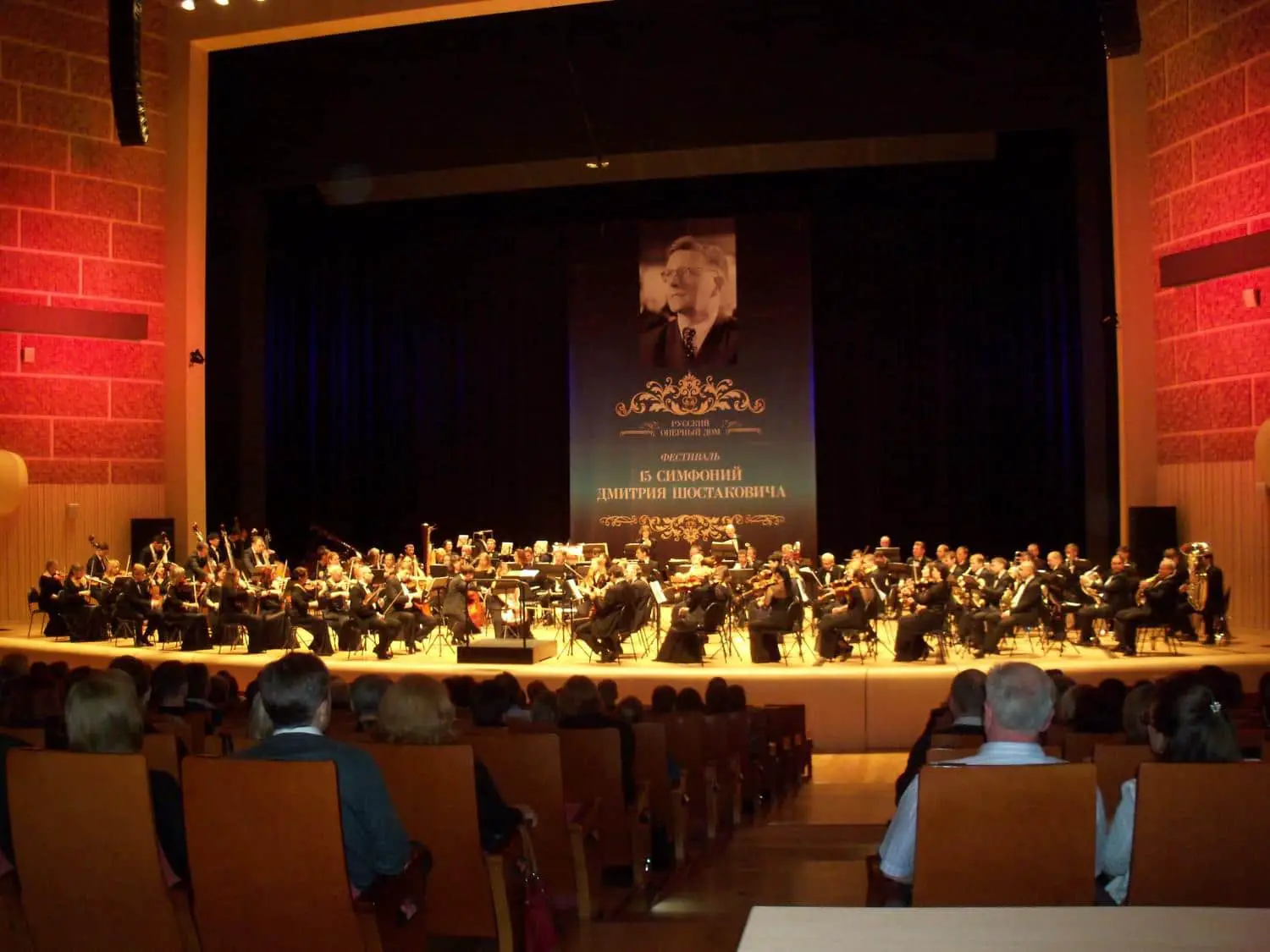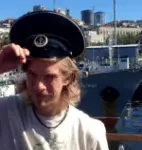Apart from the Golden Bridge (Золотой мост) and Russian Bridge (Русский мост), the Theater of Opera and Ballet is without a doubt one of the more impressive structures built in preparation for the 2012 APEC summit in Vladivostok. Crossing the Golden Bridge going away from the city center, the theater comes into view from its promontory overlooking the bridge and bay below. The giant glass panel façade is uniquely sleek in a town where ‘heritage’ generally triumphs over ‘hip’. Having passed the building many times in route to other destinations and even spent an afternoon wandering around its premises during the opening of the city-wide 2014 Pacific Meridian (Меридианы тихого) film festival, I was well past ready to experience the grandeur within by the time November arrived. Thankfully, my long-awaited opportunity arrived with the opening of the Festival of the 15 Symphonies of Dmitri Shostakovich (Фестиваль 15 симфоний Димитрия Шостаковича) on November fourth.
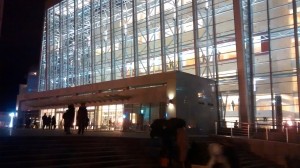
The celebration of the festival itself can be attributed to two overriding circumstances: 1) further commemoration of the 2014 Year of Culture (Год культуры) being celebrated country-wide and 2) the Artistic Director of the theater (Художественный руководитель театра), Anton Lubchenko (Антон Лубченко), has no small admiration for Shostakovich, going so far as to call him his hero. Furthermore, the director is the pupil of a coworker of Shostakovich’s during the famous composer’s later years. I, myself, however, was hardly in need of any justifying reason as our concert going troika set out on a chilly Sunday night for the second to last performance of the festival.
The theater was an attraction unto itself that night as we climbed the steps to its entry. A singular structure for some distance around, the lighted glass planes imparted a stellar quality to the concert site. Along with the view out onto the harbor and the bridge, one may nearly forget the night’s real purpose. However, the trademark Vladivostok blistering wind gusts helped provide the reminder that the real event awaited inside.
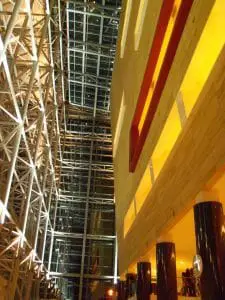
Beyond the lobby, we entered the narrow gathering space which rises several stories high from floor to ceiling and left our heavy outerwear at the coat check (гардероб), one of which is located on every level. Picking up a 20 ruble (50¢) program, we made our way up several levels before reaching one of the many entries into the Main Hall (Большой зал). Composed of a main level with three vertically stacked balconies overhead, this room is the larger, and more illustrious of the theater’s two main performance halls. We took our seats several rows back from the stage, though there appeared to be not a bad seat in the house. The orchestra soon followed our lead, though their actions were met with considerably more ado. Finally, the Artistic Director and Conductor (дирижёр) Anton Lubchenko, made his entrance, upon which all stood in admiration and appreciation. The time had then come to ready ourselves for the performance. Though for this, ready I surely was not.
In full, composed of two symphonies separated by a short intermediary reprieve, the concert began with the composer’s 4th symphony. Described as the most grandiose and one of the darkest of his works, this piece is nothing short of a tour de force. From seat-quaking tuba blasts and shattering cymbal clashes, to the merciless march of the cellos and maddening race of the violins, a more complicated piece of music I had never experienced. Then, as Lubchenko himself notes, “it all ends with stark chords and the rhythm of the heart, which ultimately dies away”. Having sunk so deeply into the music myself, I was even a little surprised to find my own heart still beating as the last solemn chord hauntingly resounded. Nevertheless, I revived my senses and stepped out into the hall as my friends and I shared speechless glances.
After thoughtlessly following the flow of people to the crowded concession stand from which I had no interest in ordering, we returned to our seats upon the sounding on the third bell (третий звонок). Our wait for the return of the orchestra and its composer was not a long one as they moved directly into the second part (второе отделение) of the concert.
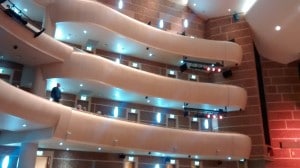
While sound, in the end, is obviously the overriding factor in determining a piece’s success, that is not to say that all other circumstances are of no consequence. Knowing that Shostakovich composed his 7th Symphony in Leningrad in 1941 during the blockade, in which millions were killed, often through slow starvation, the emotion of the work is increased immeasurably. The ever-rising roll of the snare marches ahead as the gradually building melodies take on more instruments like a military cadre slowly swelling with troops. Indeed, a shiver ran through me as I realized the sound I had been struggling to identify was the conductor singing the melody, seemingly lost, body and mind, in the merging swells of the movements. Finally, as the symphony reaches a triumphal summit, the victorious ring of the triangle pours over the final chords with glorious effect.
Though I’ve been to many concerts in my life, and a wide array at that, this was an experience unequalled. The spectacle of the venue itself, the emotion of the conductor, the at times incomprehensible skill of the musicians and, of course, the power of the music itself will leave me dwelling on this night for some time to come.
Theater of Opera and Ballet/Театр оперы и балета
ул. Фастовская 14, стр. 12
Festival of the 15 Symphonies of Dmitri Shostakovich
Hours and Ticket Prices: performance dependent
Primopera.ru


